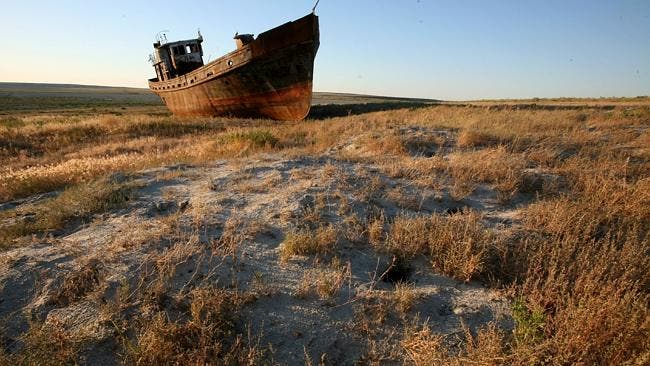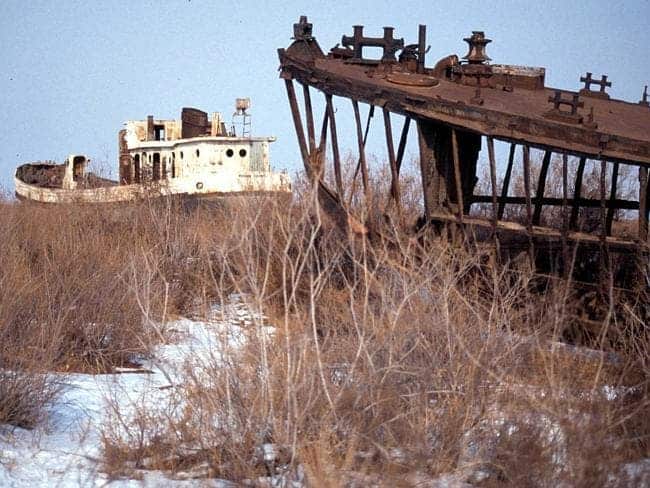The Aral Sea is was one of the largest lakes in the world, with an area of 68,000 km2 (26,300 sq mi). Lying between Kazakhstan and Uzbekistan, its water level has constantly decreased since the 1960s after the rivers that fed it were diverted by Soviet irrigation projects. By 2007, it had declined to 10% of its original size, splitting into four lakes – the North Aral Sea, the eastern and western basins of the once far larger South Aral Sea, and one smaller lake between the North and South Aral Seas.
The shrinking and ultimate disappearance of the Aral Sea is often referred to as one of the worst environmental disasters. The region’s once-prosperous fishing industry has been essentially destroyed, bringing unemployment and economic hardship. The Aral Sea region is also heavily polluted, with consequent serious public health problems. Furthermore, the lack of a body of water has led to increased climate change, with hotter and drier seasons. People have been farming the area for centuries, but agriculture in the area has been virtually eliminated. According to a report by the United Nations Environment Programme, more than 60 million people now live in the Aral region, up fourfold since 1960.

The rusting brown shell of a one time cargo ship lies in what was once a bay in the Aral Sea. Source: news.com
With the reduction of the water, salinity has increased to huge levels. However, a dam project was completed in 2005 as an effort conducted by Kazahstan to save the Aral Sea. Initially successful, it raised the water level by 12 m (39 ft) compared to 2003. Salinity dropped, and fish stocks started to grow again – but the eastern basin is practically gone. Satellite imagery showed that the basin has dried out, and while some variation may occur, it’s expected to stay dry.
Why should we care? First of all, it’s a huge environmental disaster. A huge lake disappeared in a few decades, taking with it many species, jobs, and wealth. Second of all, it shows that what we do has major consequences. If it hand’t been for the reckless irrigation systems done in the USSR (and consequently, Russia), this situation wouldn’t have happened. It’s a lesson to be learned – and a tough one at that.
Speaking with NASA, Philip Micklin, a geographer emeritus from Western Michigan University, said:
“It is likely the first time it has completely dried in 600 years, since Medieval desiccation associated with diversion of Amu Darya to the Caspian Sea.”











